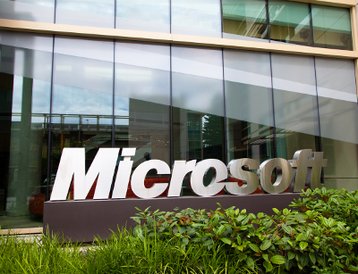Microsoft is leading the charge in sustainable energy innovation with its latest hydrogen fuel cell pilot at its Dublin data center. Partnering with ESB, an hydrogen provider, Microsoft is trialing green hydrogen as a zero-emissions alternative for powering their facility. The trial will see hydrogen fuel cells generating up to 250 kilowatts (kW) of power for the control and administration building.
What’s the Goal?
This pilot is part of a broader strategy. According to Eoin Doherty, Vice President, EMEA Cloud Operations, Microsoft, “The green hydrogen project we’re launching with ESB is a pioneering first for Microsoft in Europe, demonstrating how zero-emissions hydrogen can be harnessed to power our digital lives. If scaled successfully, it could provide new ways of advancing sustainability in our sector and beyond.” The trial will run for eight weeks, and if successful, could pave the way for broader applications in sustainability across data centers globally.
The hydrogen revolution
Hydrogen is emerging as a game-changer for clean energy in industries that require large-scale power, like data centers. While challenges exist particularly around its storage and transportation, green hydrogen (produced with zero emissions) offers a future where data centers, essential hubs in our digital world, operate without leaving a carbon footprint.
Microsoft has been experimenting with hydrogen fuel cells for years, including a successful trial where their Cheyenne, Wyoming campus ran on hydrogen fuel for 48 hours. This move aligns with global ambitions to reduce carbon emissions and transition to renewable energy.
Why this matters for the data center industry
Data centers consume massive amounts of power and are critical to today’s digital infrastructure. As Jim Dollard of ESB explains, “ESB believes green hydrogen will play an important role in the net zero energy system of the future.” By embracing hydrogen fuel, Microsoft is not only future-proofing its operations but also setting an example for other tech giants to follow.
Looking ahead
This eight-week trial, with 250kW is a small drop for a company that reportedly has over 5 gigawatts (GW) at its disposal. But its play is for the future. Both Microsoft and ESB are planning further hydrogen-based projects throughout 2024 and 2025. Microsoft has been at the forefront of the AI boom through its partnership with foremost artificial intelligence company, OpenAI and has added AI-powered functions to many of its products. This in turn has required significant spending on data centers, and this is expected to increase exponential as more hyperscalers get into the AI tussle.
For Africa, there’s considerable potential for green hydrogen exports. The European Investment Bank estimates that by 2035, Africa could produce over 50 million tonnes of green hydrogen annually. Countries like Morocco, Mauritania, and Egypt are strategically positioned to integrate into the expanding European hydrogen pipeline network under the European Hydrogen Backbone initiative.

If Microsoft can effectively scale and optimize hydrogen technology, it could fundamentally alter how data centers and other industries consume energy. This collaboration offers a glimpse into the future of sustainable technology—an exciting step that underscores Microsoft’s commitment to innovation and a greener world.





